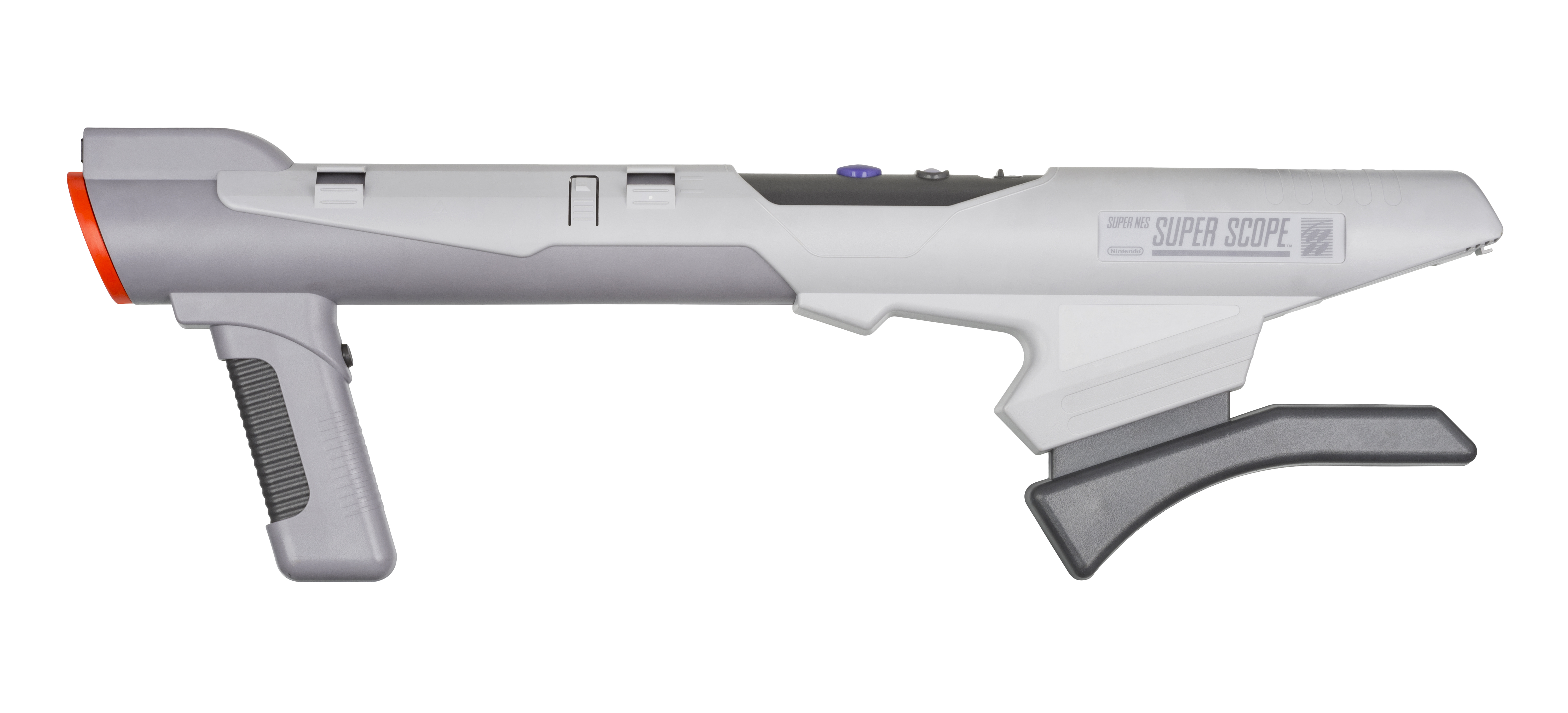|
Shien's Revenge
''Shien's Revenge'' is a 1994 in video gaming, 1994 rail shooter video game developed by Givro Corporation, Almanic Corporation and originally published by Dynamic Planning for the Super Nintendo Entertainment System in Japan and later in North America by Vic Tokai. In the game, players assume the role of the titular ninja to fight against monsters coming from a time portal in order to face against an entity known as Undertaker and rescue his companion Aska. Co-designed by Takashi Shichijo and mangaka Go Nagai, the title was created by most of the same team that worked on previous projects at Almanic such as ''E.V.O.: Search for Eden''. It was met with mixed reception from critics since its release. Gameplay ''Shien's Revenge'' is a rail shooter game played from a First-person (video games), first-person where movement is automatically controlled horizontally or vertically, as players assume the role of the titular ninja through six stages, each with a Boss (video gaming), boss ... [...More Info...] [...Related Items...] OR: [Wikipedia] [Google] [Baidu] |
Givro Corporation
was a Japanese video game development company founded in 1989 in Tokyo, Japan by Takashi Yoneda, who was previously employed by Technos Japan and Enix. The company was originally established under the name Almanic Corporation, which it operated under for a few years before changing its corporate name in 1995. Givro would go on to produce games for home consoles such as the Super Nintendo Entertainment System, Sega Genesis, 32X, Nintendo 64 and Sega Saturn. Givro released their final game in late 1997 and quietly dissolved at the end of the following year. History Origins As Almanic Corp. As Givro Corp. Closure Games Notes References External links Givro Corporationat MobyGames MobyGames is a commercial website that catalogs information on video games and the people and companies behind them via crowdsourcing. This includes nearly 300,000 games for hundreds of platforms. The site is supported by banner ads and a small ... {{Square En ... [...More Info...] [...Related Items...] OR: [Wikipedia] [Google] [Baidu] |
Electronic Gaming Monthly
''Electronic Gaming Monthly'' (often abbreviated to ''EGM'') is a monthly American video game magazine. It offers video game news, coverage of industry events, interviews with gaming figures, editorial content and product reviews. History The magazine was founded in 1988 as U.S. National Video Game Team's ''Electronic Gaming Monthly'' under Sendai Publications. In 1994, ''EGM'' spun off '' EGM²'', which focused on expanded cheats and tricks (i.e., with maps and guides). It eventually became '' Expert Gamer'' and finally the defunct '' GameNOW''. After 83 issues (up to June 1996), ''EGM'' switched publishers from Sendai Publishing to Ziff Davis. Until January 2009, ''EGM'' only covered gaming on console hardware and software. In 2002, the magazine's subscription increased by more than 25 percent. The magazine was discontinued by Ziff Davis in January 2009, following the sale of ''1UP.com'' to UGO Networks. The magazine's February 2009 issue was already completed, but was not ... [...More Info...] [...Related Items...] OR: [Wikipedia] [Google] [Baidu] |
Video Game Composer
Video game music (or VGM) is the soundtrack that accompanies video games. Early video game music was once limited to sounds of early sound chips, such as programmable sound generators (PSG) or FM synthesis chips. These limitations have led to the style of music known as chiptune, which became the sound of the first video games. With technological advances, video game music has grown to include a wider range of sounds. Players can hear music in video games over a game's title screen, menus, and gameplay. Game soundtracks can also change depending on a player's actions or situation, such as indicating missed actions in rhythm games, informing the player they are in a dangerous situation, or rewarding them for specific achievements. Video game music can be one of two kinds: original or licensed. The popularity of video game music has created education and job opportunities, generated awards, and led video game soundtracks to be commercially sold and performed in concerts. ... [...More Info...] [...Related Items...] OR: [Wikipedia] [Google] [Baidu] |
Video Game Artist
Game art design is a subset of game development involving the process of creating the artistic aspects for video games. Video game art design begins in the pre-production phase of creating a video game. Video game artists are visual artists involved from the conception of the game who make rough sketches of the characters, setting, objects, etc. Bates 2004, p. 171 Bethke 2003, p. 45-49 These starting concept designs can also be created by the game designers before the game is moved into actualization. Sometimes, these concept designs are called "programmer art". After the rough sketches are completed and the game is ready to be moved forward, those artists or more artists are brought in to develop graphic designs based on the sketches. The art design of a game can involve anywhere from two people and up. Small gaming companies tend to not have as many artists on the team, meaning that their artist must be skilled in several types of art development, whereas the larger the compa ... [...More Info...] [...Related Items...] OR: [Wikipedia] [Google] [Baidu] |
Video Game Programmer
A game programmer is a software engineer, programmer, or computer scientist who primarily develops codebases for video games or related software, such as game development tools. Game programming has many specialized disciplines, all of which fall under the umbrella term of "game programmer". A game programmer should not be confused with a game designer, who works on game design. History In the early days of video games (from the early 1970s to mid-1980s), a game programmer also took on the job of a designer and artist. This was generally because the abilities of early computers were so limited that having specialized personnel for each function was unnecessary. Game concepts were generally light and games were only meant to be played for a few minutes at a time, but more importantly, art content and variations in gameplay were constrained by computers' limited power. Later, as specialized arcade hardware and home systems became more powerful, game developers could deve ... [...More Info...] [...Related Items...] OR: [Wikipedia] [Google] [Baidu] |
Super Famicom
The Super Nintendo Entertainment System (SNES), commonly shortened to Super NES or Super Nintendo, is a 16-bit home video game console developed by Nintendo that was released in 1990 in Japan and South Korea, 1991 in North America, 1992 in Europe and Oceania, and 1993 in South America. In Japan, it is called the In South Korea, it is called the Super Comboy and was distributed by Hyundai Electronics. The system was released in Brazil on August 30, 1993, by Playtronic. Although each version is essentially the same, several forms of regional lockout prevent cartridges for one version from being used in other versions. The Super NES is Nintendo's second programmable home console, following the Nintendo Entertainment System (NES). The console introduced advanced graphics and sound capabilities compared with other systems at the time. It was designed to accommodate the ongoing development of a variety of enhancement chips integrated into game cartridges to be competitive in ... [...More Info...] [...Related Items...] OR: [Wikipedia] [Google] [Baidu] |
Video Game Industry
The video game industry encompasses the Video game development, development, marketing, and Video game monetization, monetization of video games. The industry (economics), industry encompasses dozens of job disciplines and thousands of jobs worldwide. The video game industry has grown from niches to mainstream. , video games generated annually in global sales. In the US, it earned about in 2007, in 2008, and 2010, according to the Entertainment Software Association, ESA annual report. Research from Ampere Analysis indicated three points: the sector has consistently grown since at least 2015 and expanded 26% COVID-19 pandemic, from 2019 to 2021, to a record ; the global games and services market is forecast to shrink 1.2% annually to in 2022; the industry is not recession-proof. The industry has influenced the advance of personal computers with sound cards, graphics cards and 3D graphic accelerators, CPUs, and co-processors like PhysX. Sound cards, for example, were origi ... [...More Info...] [...Related Items...] OR: [Wikipedia] [Google] [Baidu] |
Video Game Designer
Video game design is the process of designing the content and rules of video games in the pre-production stage and designing the gameplay, environment, storyline and characters in the production stage. Some common video game design subdisciplines are world design, level design, system design, content design, and user interface design. Within the video game industry, video game design is usually just referred to as "game design", which is a more general term elsewhere. The video game designer is very much like the director of a film; the designer is the visionary of the game and controls the artistic and technical elements of the game in fulfillment of their vision. However, with very complex games, such as MMORPGs or a big budget action or sports title, designers may number in the dozens. In these cases, there are generally one or two principal designers and many junior designers who specify subsets or subsystems of the game. As the industry has aged and embraced alternative pr ... [...More Info...] [...Related Items...] OR: [Wikipedia] [Google] [Baidu] |
Super Scope
The Super Scope, known as the Nintendo Scope in Europe and Australia, is a first party light gun peripheral for the Super Nintendo Entertainment System. The successor to the NES Zapper, the Super Scope was released in North America and the PAL region in 1992, followed by a limited release in Japan in 1993 due to a lack of consumer demand. The peripheral consists of two devices: the wireless light gun itself, called the Transmitter, and a Receiver that connects to the second controller port of the Super NES console. The Transmitter has two action buttons, a pause button, a power switch and is powered by six AA batteries. Design The Transmitter is a bazooka-shaped device, just under 2 feet long. Located about midway on top of the barrel are two buttons, the purple "Fire" button (colored orange in Japanese and European models) and the gray "Pause" button, and a switch used to turn the Super Scope off or select regular or turbo fire. In the middle on either side are two clips fo ... [...More Info...] [...Related Items...] OR: [Wikipedia] [Google] [Baidu] |
SNES Mouse
The Super NES Mouse, sold as the in Japan, is a peripheral created by Nintendo for the Super Nintendo Entertainment System. It was first released on July 14, 1992, in Japan, in August 1992 in North America, and on December 10, 1992, in Europe. Originally designed for use with the game ''Mario Paint'', the Super NES Mouse was sold in a bundle with the game and included a plastic mouse pad. Soon after its introduction, several other titles were released with Mouse support. Although this device closely resembles and mimics the functionality of a two-button computer mouse, it was smaller than most computer mice of the time and had a significantly shorter cord than the standard Super NES controller. The ''Mario Paint'' and Mouse package sold more than units by March 1993. List of compatible games The Super NES Mouse was supported by many games during its lifetime, and even by the Super Game Boy accessory. Certain games released after the Mouse—such as ''Super Mario All-Stars' ... [...More Info...] [...Related Items...] OR: [Wikipedia] [Google] [Baidu] |



.jpg)


